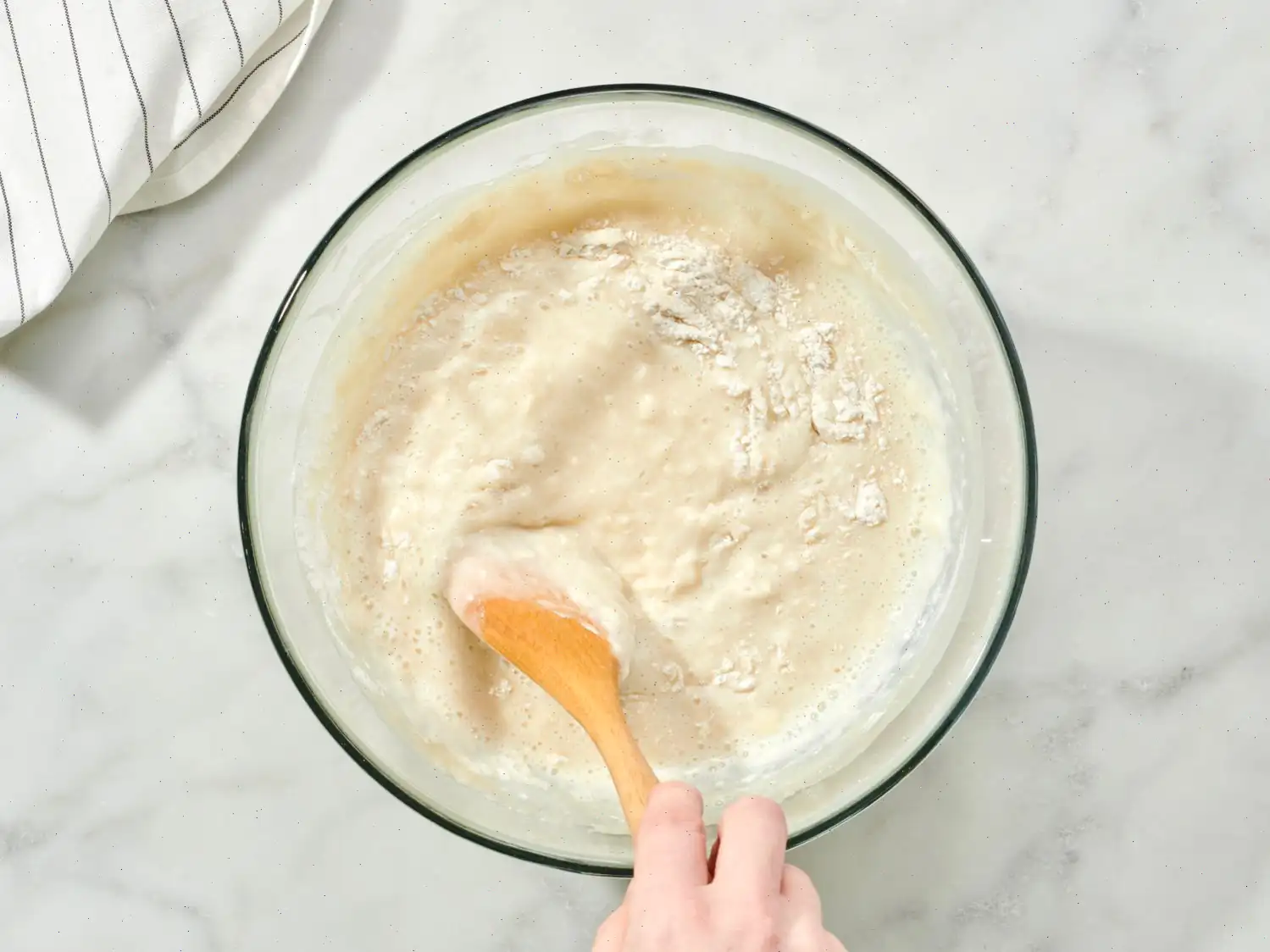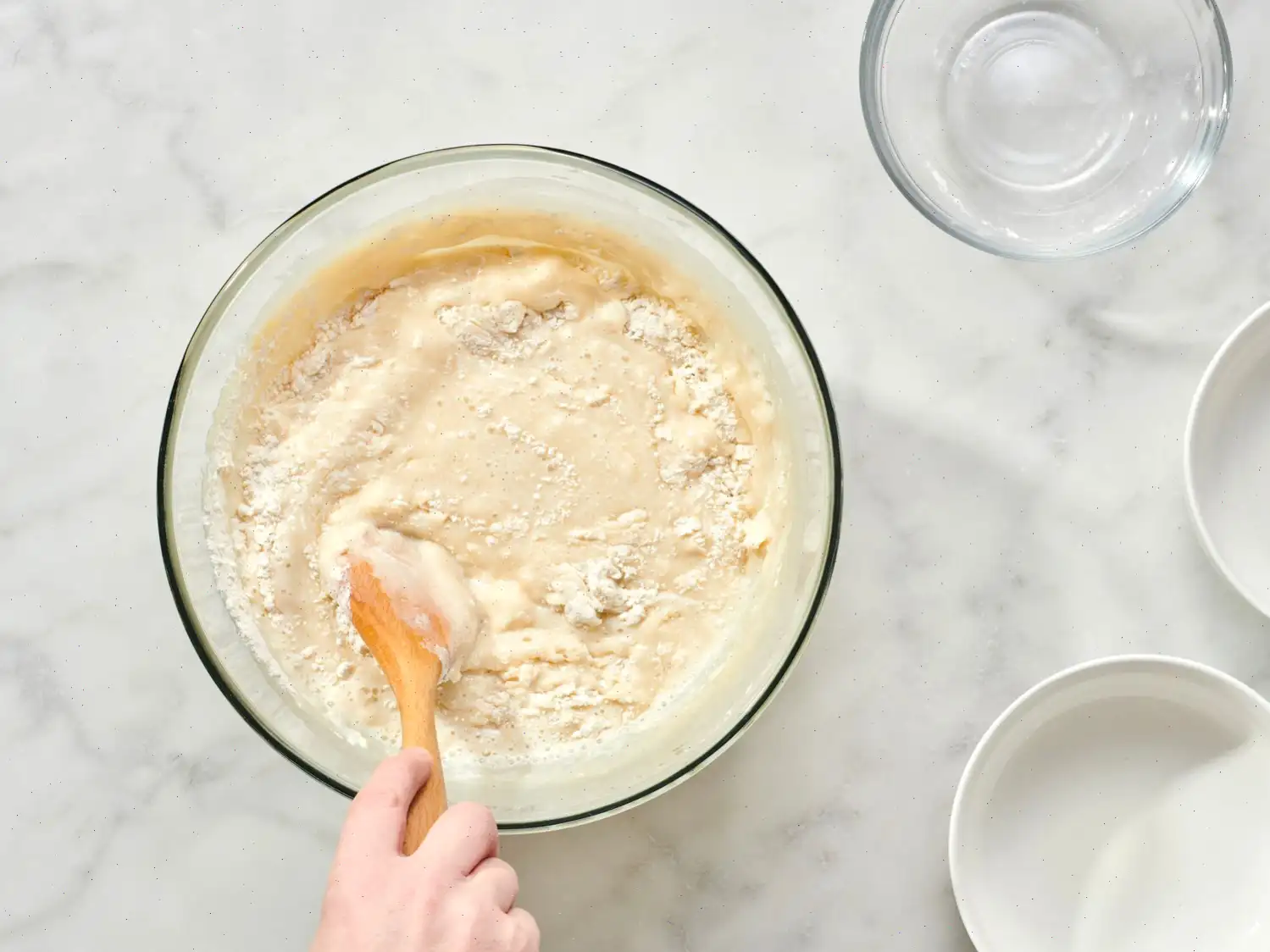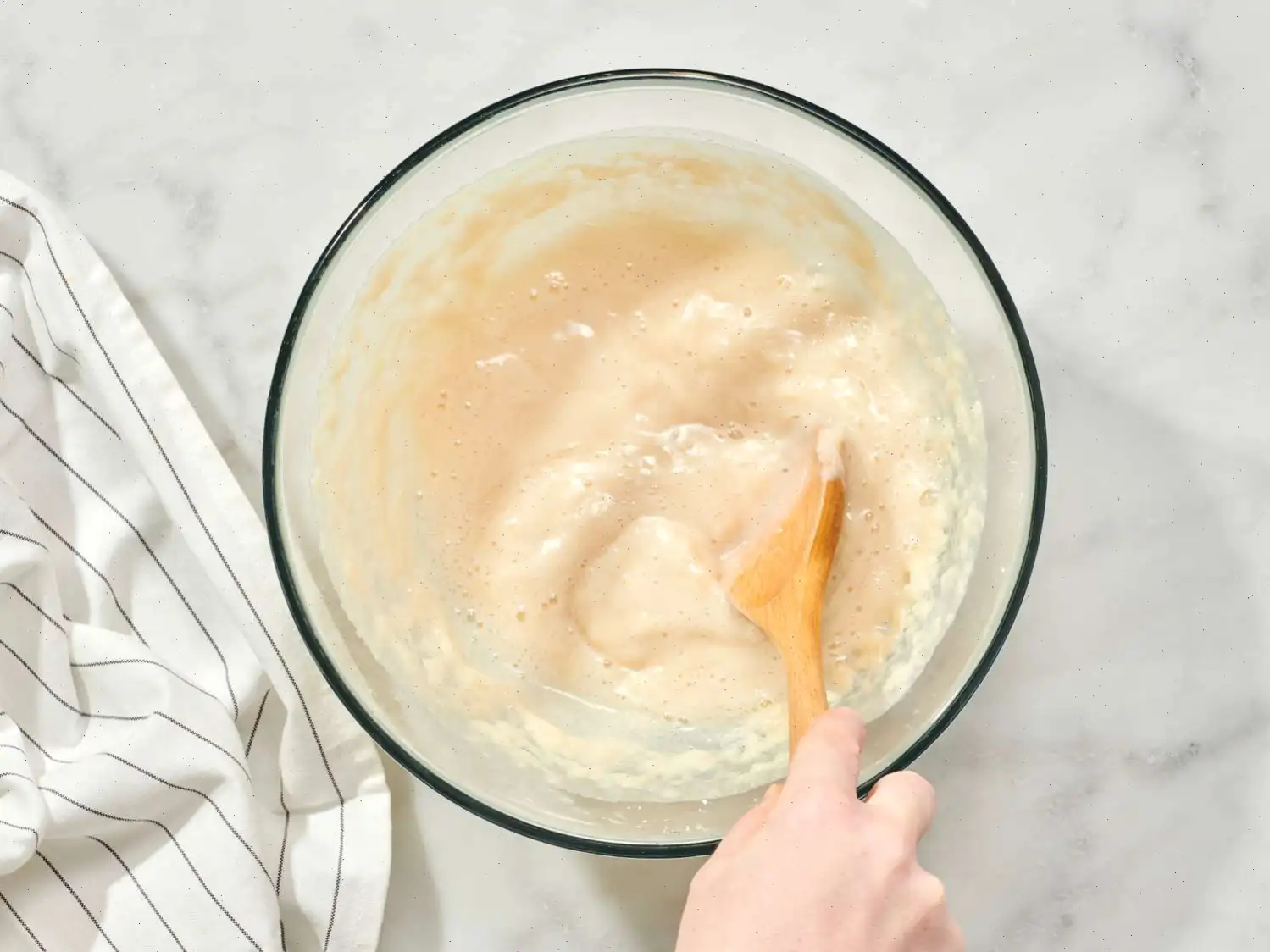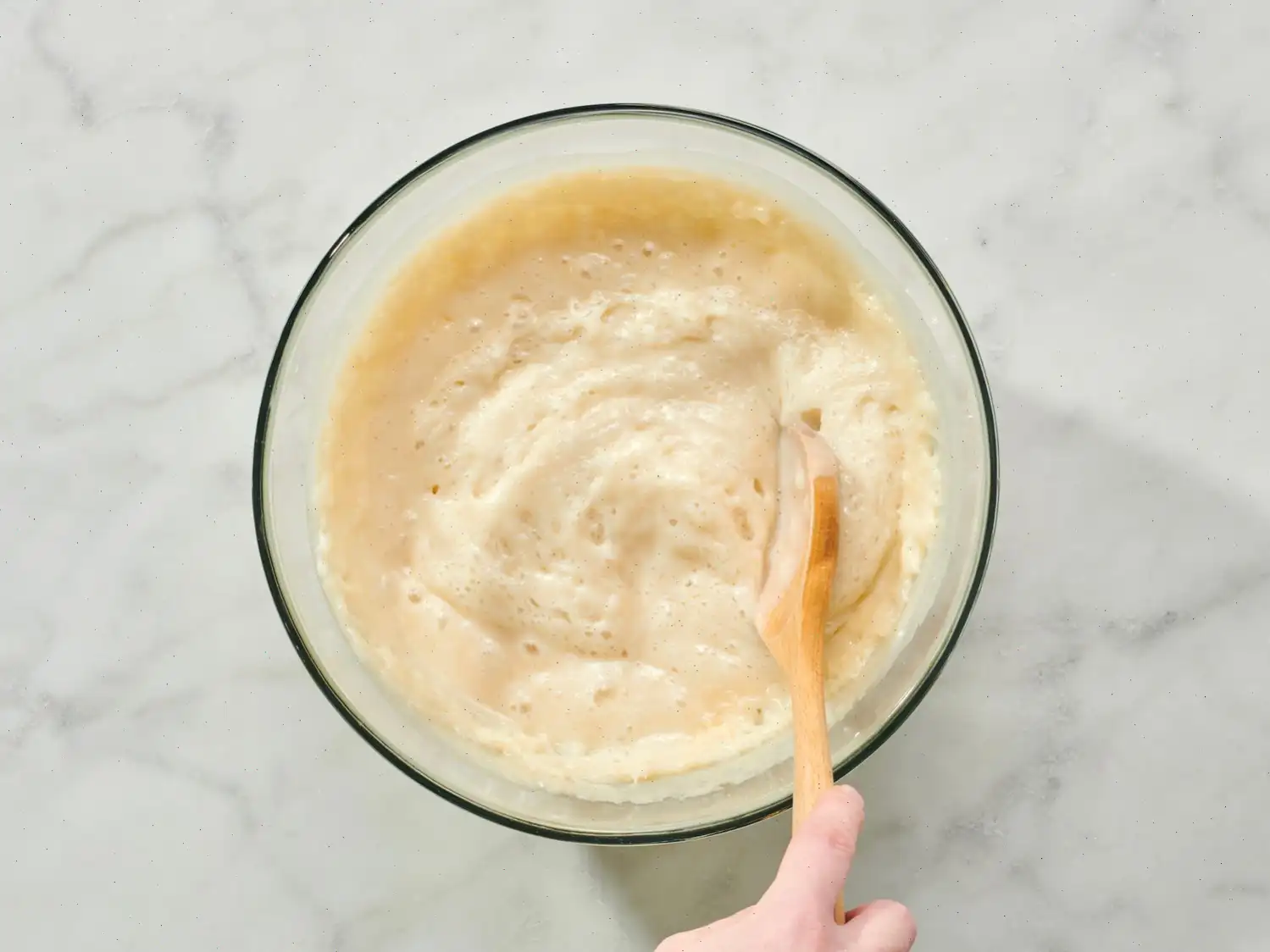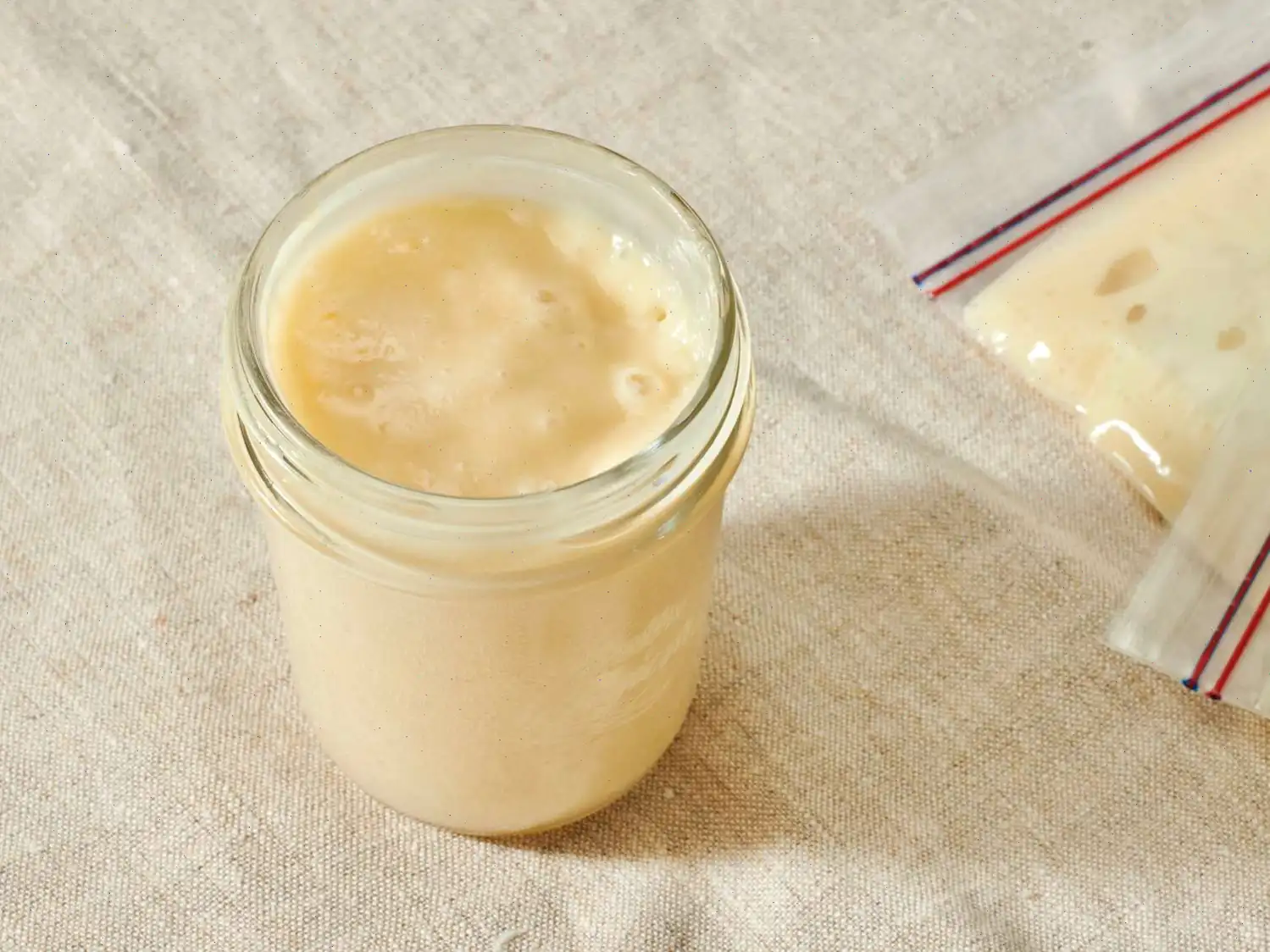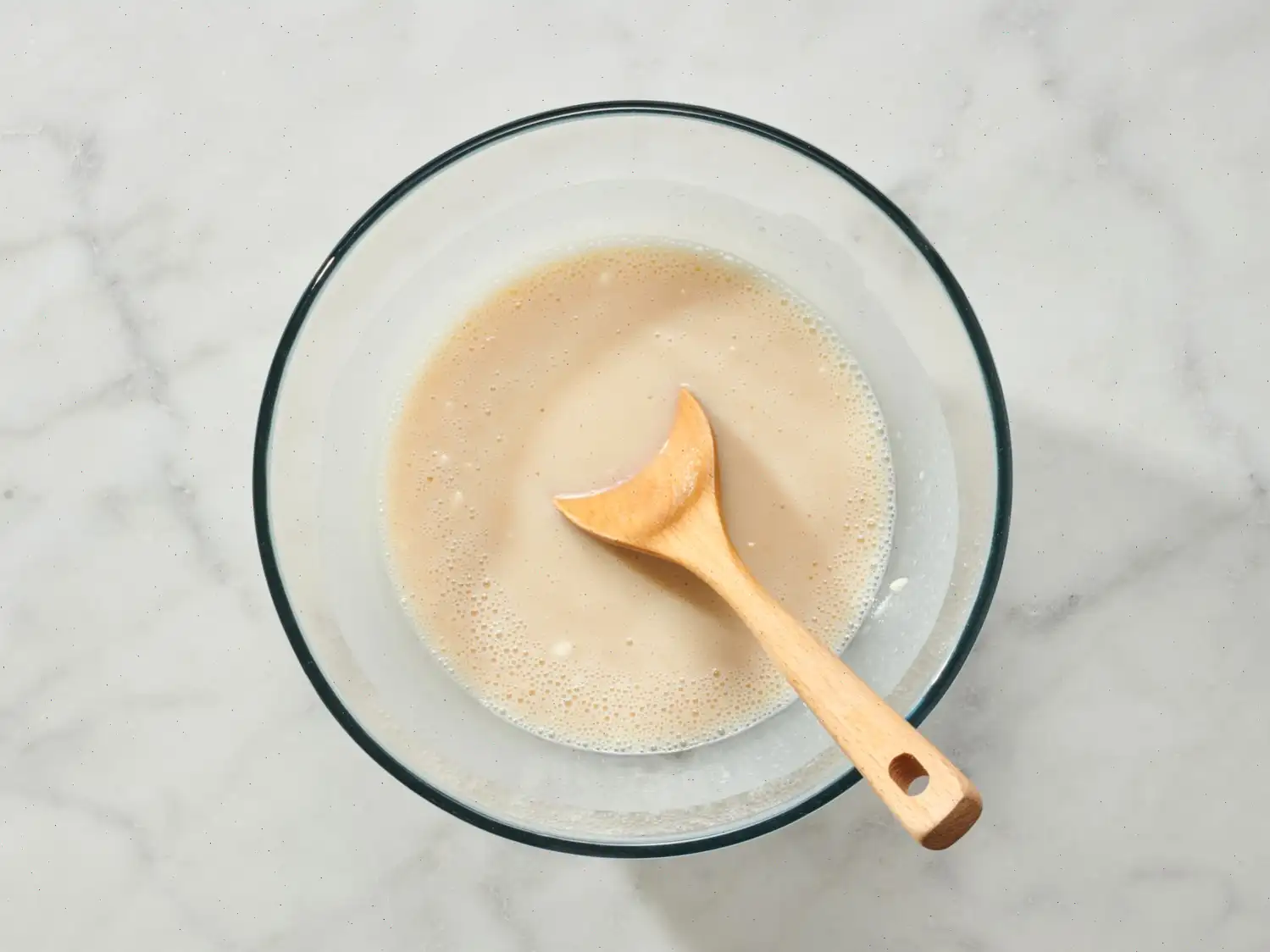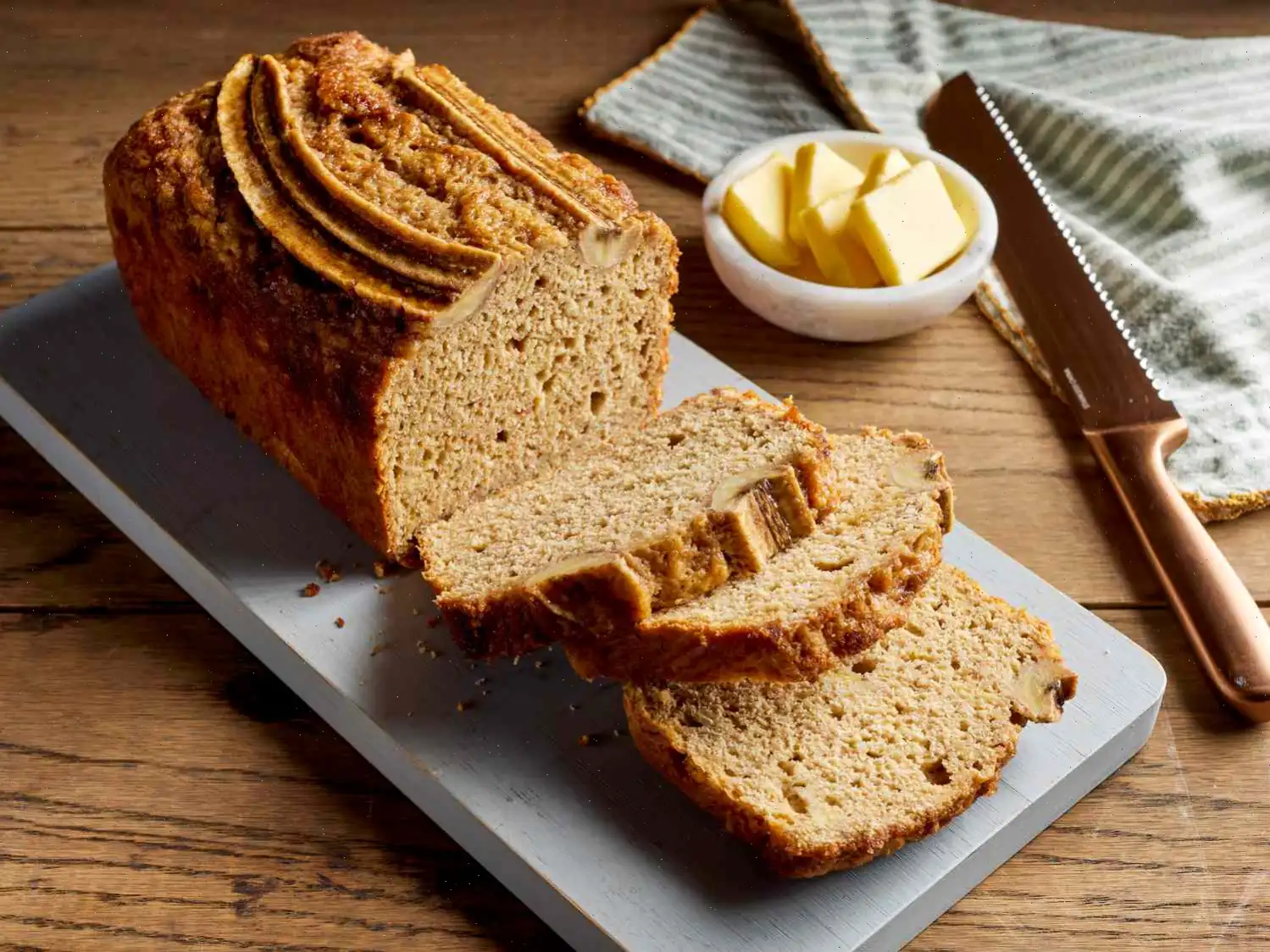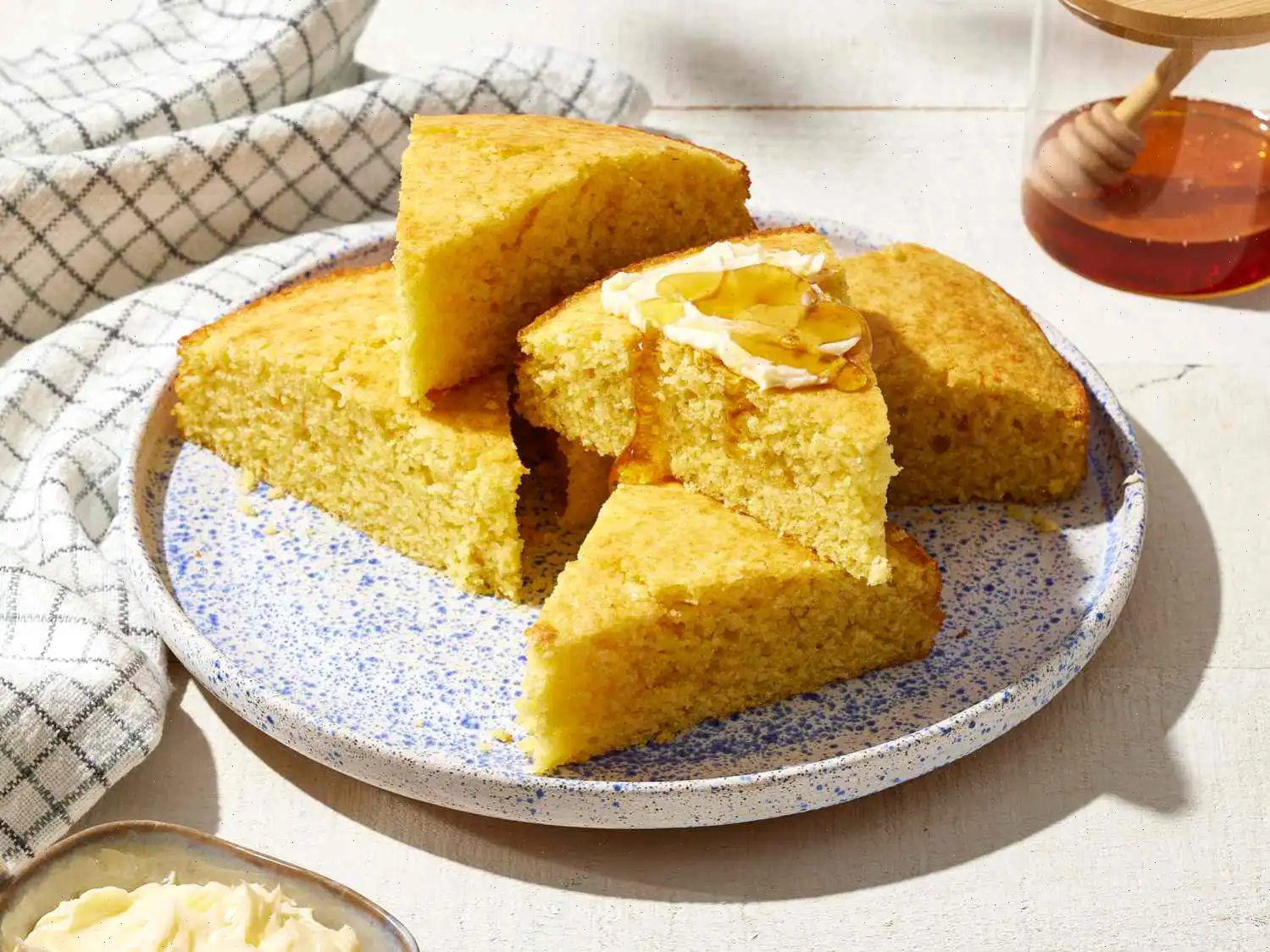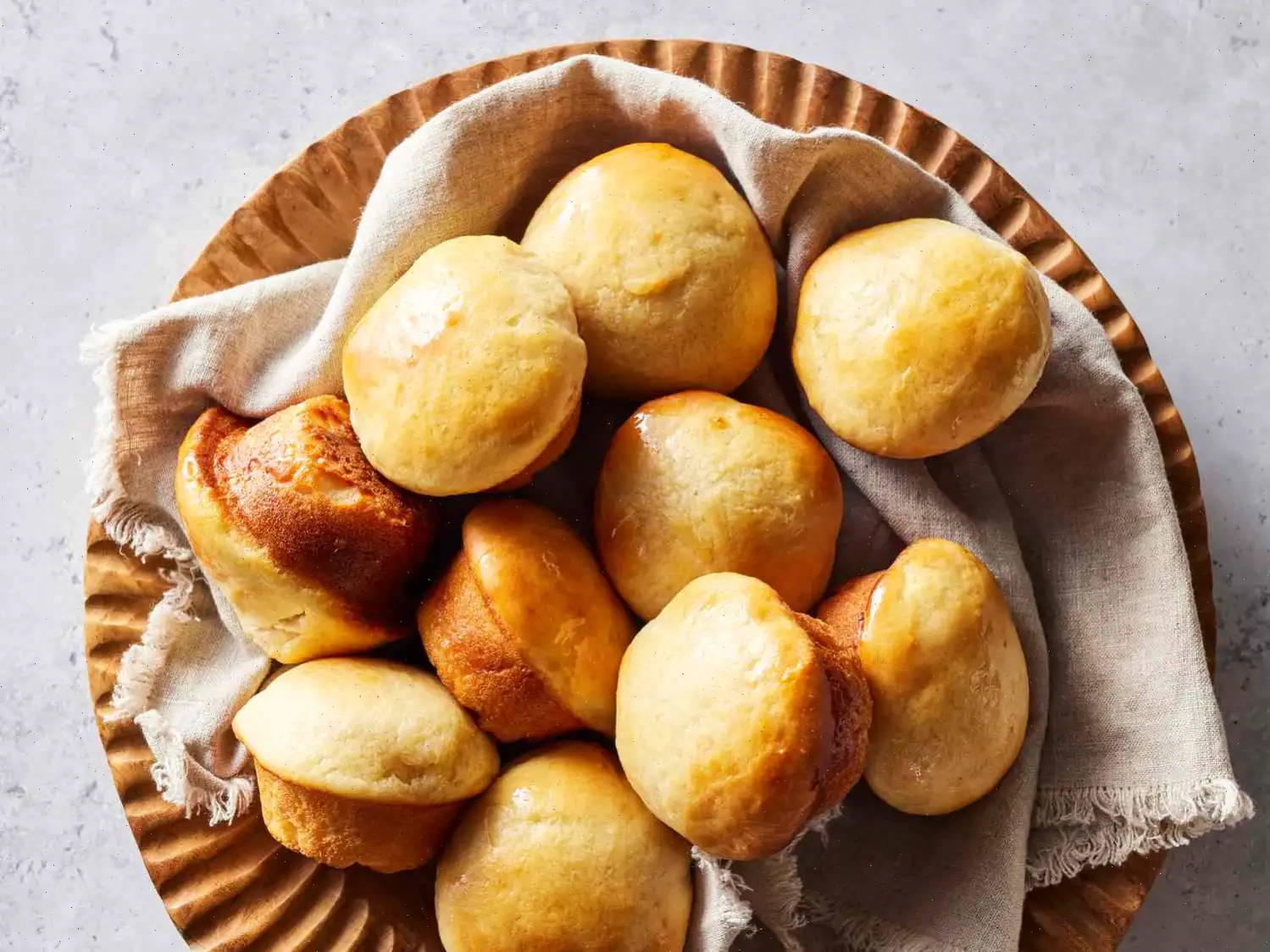
Amish Friendship Bread Starter Recipe
Amish Friendship Bread Starter Recipe
Ingredients
- 1 (.25 ounce) package active dry yeast
- cup warm water (110F/45C)
- 3 cups all-purpose flour, divided
- 3 cups white sugar, divided
- 3 cups milk, divided
Directions
Step 1: Begin by gathering all your ingredients. Youll need active dry yeast, warm water, flour, sugar, and milk to get started.
Step 2: In a small bowl, dissolve the yeast in warm water. Let it stand for about 10 minutes until it becomes foamy.
Step 3: In a 2-quart (glass, plastic, or ceramic), combine 1 cup of flour and 1 cup of sugar. Mix them thoroughly.
Step 4: Stir in 1 cup of milk and the yeast mixture into the flour and sugar. Cover the loosely and leave it at room temperature until the mixture becomes bubbly. This marks Day 1 of your 10-day process.
Step 5: For Days 2 through 4, simply stir the starter with a spoon once a day.
Step 6: On Day 5, stir in another cup of flour, sugar, and milk into the mixture.
Step 7: For Days 6 through 9, continue to stir the starter once a day with a spoon.
Step 8: On Day 10, stir in the remaining cup of flour, sugar, and milk. Now its time to make your first batch of bread!
Step 9: Remove 1 cup of starter to bake your Amish Friendship Bread. Give 2 cups of the starter to friends (1 cup each) along with this recipe and your favorite Amish bread recipe.
Step 10: Store the remaining 1 cup of starter in a in the refrigerator. You can either use it to start the 10-day process over again (starting from Step 2) or freeze it in 1-cup portions for later use. If freezing, make sure to thaw the starter for at least 3 hours at room temperature before using it.
Nutrition Facts (per serving)
- Calories: 34
- Fat: 0g
- Carbohydrates: 8g
- Protein: 1g
- Sodium: 3mg
- Calcium: 8mg
- Iron: 0mg
- Potassium: 14mg
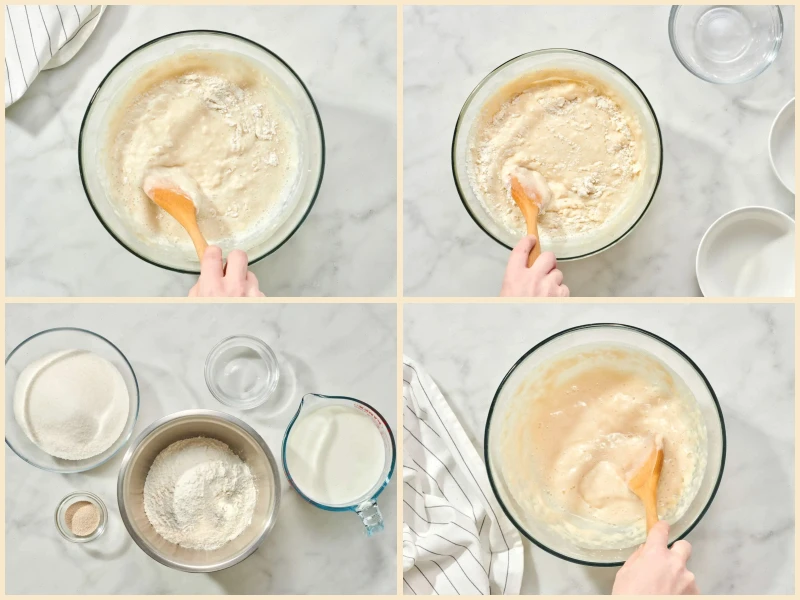

History of Amish Friendship Bread
Amish Friendship Bread has its roots deeply embedded in the Amish tradition, where sharing food with friends and neighbors is an essential part of the community culture. The bread is made from a "starter" dough that is passed along from person to person. The idea is to share the starter with others, creating a circle of kindness and generosity. This recipe, which includes a blend of yeast, milk, sugar, and flour, creates a sweet, mildly tangy bread that is both comforting and nostalgic. Although the exact origin is unknown, it is believed to have been passed down through generations of Amish families, spreading beyond the Amish community to become a beloved tradition throughout the United States and beyond.
Regional Variations
While Amish Friendship Bread is most commonly associated with the Amish communities of Pennsylvania, it has become a popular recipe throughout the United States. Regional variations often include different flavor additions to the basic bread, such as cinnamon, nuts, chocolate chips, or dried fruits. In some areas, it's common to make muffins or cupcakes instead of loaves, making it easier to share and enjoy. The concept of sharing the starter also means that every batch can have its own twist, depending on the local preferences and the ingredients available.
Difference from Similar Dishes
Amish Friendship Bread differs from traditional sourdough in that its a sweet, non-sour bread, even though it also uses a starter. The main difference lies in the starters ingredients, which include sugar and milk. This makes the starter sweeter and more suitable for creating dessert-like breads, unlike sourdough, which has a tangy and savory flavor due to the natural fermentation process. Additionally, Amish Friendship Bread is unique in its "passing on" tradition, which sets it apart from other bread recipes. Sourdough starters, for instance, are typically kept by the baker for personal use, rather than shared with others.
Where to Serve Amish Friendship Bread
Amish Friendship Bread is a versatile dish that can be served on various occasions. It is often enjoyed as a sweet breakfast treat, a snack with coffee or tea, or as a dessert after meals. It's commonly shared at community gatherings, such as church potlucks, family reunions, or as a thoughtful gift for neighbors and friends. Because of its sweet flavor and moist texture, it is perfect for special events like birthdays, holidays, and even as a gift during the Christmas season. Some people even freeze batches of the bread to enjoy throughout the year.
Fun Facts about Amish Friendship Bread
- The bread's starter can last for years if properly cared for, and it often gets passed down through generations, making it a true family heirloom.
- While the original recipe involves 10 days of care and feeding the starter, some bakers have adapted it to a quicker version, although the tradition of patience and sharing remains central.
- Amish Friendship Bread has been featured in many community cookbooks and online recipe sites, continuing its legacy as a beloved homemade gift.
- It's believed that the bread's popularity surged in the 1990s due to viral internet recipes and the joy of sharing it with friends, as well as its connection to nostalgia and community spirit.
FAQ about Amish Friendship Bread Starter Recipe
Comments
yummo
10/06/2025 01:52:54 PM
what happens if you do use a metal bowl or spoon? Just curious because the person that gave me the starter kit did use a metal bowl on hers and they both turned out fine. Does anyone know why it says that? By the way my bread came out delicious!! I also remember my mom making this bread. It is so easy, but it is just a pain having a plastic bad constantly sitting around. If I don't keep it out I will forget about it!
Audrey E Wrobel
02/02/2009 07:28:07 AM
So easy to make, but it stinks as it ages. I followed the advice of other reviewers here by covering the plastic bowl with a paper towel and using only wooden spoons to stir the recipe once per day. The mixture never stopped bubbling up for me. However, I used self-rising flour (as it was on hand), so I wonder if that made a difference. Update: I now know it should not smell bad, as a rancid smell would be bad bacteria taking hold. (I realized this actually from composting.) Many thanks for sharing this recipe, friend! I had been searching for it ever since someone had given me some starter many years ago (with a recipe I had since misplaced). Last time I added twice the yeast and started out with whole wheat flour, but I had to add water once to thin it out. Countless ways to enjoy this! The Amish Friendship Bread on here is good, too.
skthaxton
10/04/2009 11:21:00 AM
I have been making this bread, for a long time.. but recently I started making it in cupcake pans.. easier to store, freeze and eat.. I have added chocolate chips (3/4 cup, and 1 cup walnuts, or our FAVORITE is to add 3/4 of craisins and 1 cup chopped pecans.. everyone loves this.... I just froze a starter last week, because like everyone stated, once you start you can't quit unless you just throw it out...and what a waste that would be. We love the muffins and everyone I have shared it with have expressed the same. Sandy
Cut Out the Creativity
10/02/2013 07:17:55 AM
This starter batter was going well. I have active yeast for the sour dough, and the right ingredients to add to make it a Thanksgiving Pumpkin bread (pumpkin puree, spices, and nuts). So, I realize that I was getting carried away as I added the 1 cup pumpkin puree on the 5th day (NOT the 10th day = BAKING DAY)! You are wondering if the batter went rancid? Nope. All set on Day 10, I added a second 1 cup of pumpkin puree, not too much spices, 4 tbsp of oil, 2 cups of flour, 2 medium eggs. Just so you know, the batter is quite gum-like. I cooked mine at a lower-temp for longer to make sure it was completely cooked!!
AuntieM
11/23/2020 06:59:37 PM
I am concerned that this recipe requires milk. My starter is sourdough starter made originally in my bread crock with just flour and water. The key is using whole wheat or rye to begin, ratio 2 flour to 1 water then the directions for feeding are the same. And use unbleached flour. Mine is plenty sour and I didn’t use milk or yeast (plenty of natural yeast in the crock and the air).
KeeAnn
11/06/2015 04:33:39 PM
I used to have this and made it all the time in college. I loved making it into muffins with chocolate chips and pumping up the spice. Nutmeg helped as did clove. I loved adding fruit that was aging faster than I could eat it. A very useful thing I did was to measure the amount left after the division and learning that you ended up with about 5 cups of starter at day 10 so you could freeze yours and make a double batch of the recipe and have plenty. This way if you have no one to share it with, no worries! Or freeze one cup measures and make a half batch when you wanted them and didn't have 10 days to wait. It also freezes well after being baked so it was great to freeze those muffins and take them in my lunch. If they weren't thawed enough, I could microwave them and since they were frozen when I arrived at school/work they didn't crush in the lunch bag. Bonus: they were an ice pack for the rest of my lunch on hot days.
MAS
05/15/2014 05:26:32 AM
This is a nice enough sweet dessert-y bread. But I just finished my first batch and my suspicions are confirmed. It is unnecessary to go through the whole 10 day period of mixing and waiting, etc. If you think about what you are creating, you will understand. You start with a gift of what is essentially a yeast sourdough base. You then feed the yeast over the course of the 10 days and then make your bread. Here's my problem with the whole thing: once you have built up this fabulous baggie full of yeast and sourdough base, you add whatever flavor ingredients you want and throw it in the oven. The last step completely negates the fact that you have a yeasty mixture! You don't let the bread raise from the CO2 produced by the yeast! You add a bunch of ingredients and bake it...those ingredients include leaveners such as baking powder and baking soda. So although this bread is relatively tasty (especially when you add a handful of white chocolate and butterscotch chips!) waiting the 10 days is just unnecessary. I would be willing to bet if you took all of the ingredients and threw them together and put them in the oven, you would get the same result. (With the exception of whatever yeasty flavor the yeast mixture adds).
Margie
03/26/2025 04:52:23 PM
TOO LONG TO WAIT ... I used to make this years ago and lost the recipeat some point. So uspet because I loved this bread. Whie looking for the starter recipe I saw a recipe for Amish Friendship Bread - With No starter. Since the starter is a 10 day process, I decided to try the No Starter Recipe. I'm sticking with the No Starter recipe. It is same day eating it an hour or so later. Difference - 2 cups of Buttermilk. No yeast, No 10 day wait and it is just as delicious.
Anna
09/08/2011 06:48:57 PM
Great option if you have no one to give the starters to: usually you make 4 1c. starters which leaves you with 1c. in the bowl to make bread. Instead, take out only 1c. to make a starter for yourself to continue, which leaves 4 cups in the bowl. Separate 2c. into another mixing bowl, and make 2 separate DOUBLE batches of bread (double whatever Amish bread recipe you are using for EACH bowl). You can bake a ton of loaves at once and freeze them to use or give away later. This is a great option when baking these to give as Christmas gifts! In answer to some previous questions, sometimes the starter seems to die down days 6-9 -this is normal and the bread will bake fine Day 10. The next started will pick up again bubbling after Day 2...if it doesn't you can always allow more air (leave bag open if you are using a ziplock to let it start fermenting again).
KHGrimes
02/17/2014 08:35:02 PM
My mother and I have been making Amish Friendship Bread for years. She and I have made several variations and haven't been disappointed by a single batch! This starter makes delicious bread, and is fun to make and share with friends. Instead of using a mixing bowl, I combine the ingredients in a gallon ziplock bag kneading the outside rather than mixing with a spoon. It works great and requires less clean up!
Allrecipes Member
06/23/2014 09:35:19 PM
I first ran into this recipe 35 years ago when I was married to a man who HATED fruitcake. We had always had fruitcake for Christmas & New Year's so I knew my family would expect it. I made my basic fruitcake using this as a base, added a little cardamom to make it more like what he was used to from northern Europe and Voila! best Christmas cake ever! You can make it with anything... pumpkin, sweet potatoes, zucchini, actually any grated squash, carrots, parsnips, beets, potatoes (amp up the spices a little), apples, pears, firm peaches or plums, figs, raisins, dates, currants, gooseberries, aronia, goji, loganberries, honeyberries, blackberries, raspberries, strawberries, cranberries or blueberries (fresh or dried), any dried fruit, any nuts (I prefer them unsalted), or mix them up however you like for your own unique fruitcake recipe. Yes, you may make it with soy, rice or almond or other nut milk, you just may need to adjust for consistency on day 10. Experiment! Use your imagination! Same with spices. Try mace instead of nutmeg (gentler); allspice in place of cloves. Cardamom has been my secret ingredient for years. Those who have never had those crispy, brown German Christmas cookies usually don't recognise the flavor. So, maybe a batch doesn't turn out so well. You'd be amazed what does. Yellow beets or carrots will have everyone wondering. Whenever I had starter left over, I just baked it & sent it to work with my husband, or gave it to my stepsons to share around.
CraftyWhey1595
05/13/2025 03:59:13 PM
It was yummy! My starter made 5.5 cups. Anyone else??
Margaret Lee
03/28/2025 03:03:02 PM
Everyone said it was amazing.
Diana Chistruga
02/26/2025 05:57:59 PM
It was worth the effort. This was my first time making a sweet starter, and I was surprised by how easy it was to keep going. It added a subtle tangy sweetness to the breads I made, making them extra soft and flavorful
Laura Martinez
02/12/2025 06:00:24 AM
So quick, so tasty, SO GOOD! 🙌
Kim
01/15/2025 12:55:29 AM
Soo good!!
Joycelyn Marie Landry-Martin
10/17/2024 12:56:33 PM
I will try this recipe, because I have had it before but I have never had to start from the complete beginning. This is a great riecipe you talking nothing but pure goodness . Someone had given me a friend ship packet and made it was gift giving it to and they was asking for more . Bu my last packet that had gone bad and I didn’t know how to star a the one but now I got it and I will do it again .
Beth Wright-Seeley
10/07/2024 03:44:35 PM
Easy to follow and definitely worth the effort!
Gary Johnson
08/10/2024 07:56:51 PM
Quick, simple, and seriously good.
Andrea Smith
05/09/2024 10:36:51 PM
This is such a fun thing to do and makes the best breads and cookies! The best part of all is the sharing! Give it a try and you'll be glad you did! I am!


